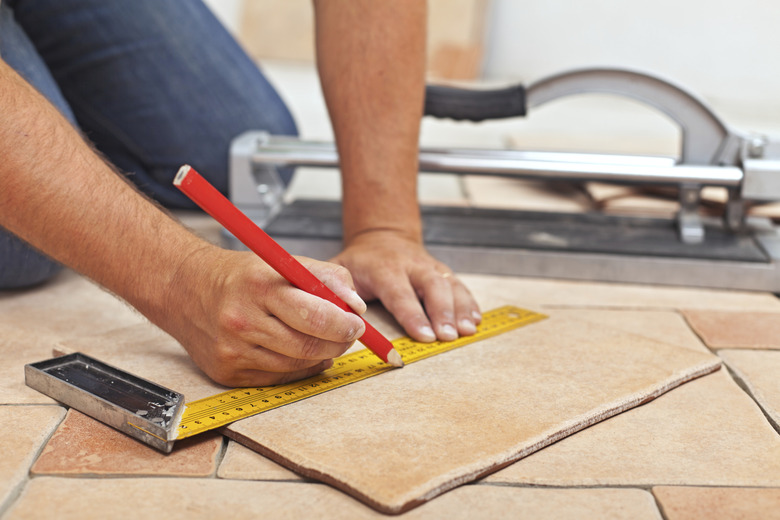Can Liquid Nails Be Used On Floor Tile?
Liquid Nails is to a contractor what a glue gun is to a crafter. It can cure a number of problems quickly and easily, and may seem like the solution to just about every home improvement challenge. However, this solvent-based, rubber adhesive has its limitations. It can be used to repair a loose vinyl or tile floor, but it should never be used for installation. Brantz Appraisal, an independent firm that tests construction materials, does not list floor tiles among the construction materials for which Liquid Nails is suitable.
Performance
Performance
Liquid Nails is an adhesive that works well for securing baseboards, wainscoting and other materials in place. However, it can crack and dry with time and is usually not a permanent solution. When used to secure wood, most homeowners follow up by securing the wood with nails. Liquid Nails will not adequately hold floor tile in place. Over time, the tiles may come loose or crack, especially in areas with heavy foot traffic.
Cost
Cost
At a few dollars per tube, Liquid Nails isn't pricey when used as a spot-adhesive, but the amount you would need for installing an entire tile floor would make the project prohibitively expensive. If you have one or two loose tiles in an area that doesn't get a lot of wear, use Liquid Nails to repair the floor. However, for a big job, Liquid Nails is one of the most costly adhesives you can use.
Recommendations for Ceramic Tile
Recommendations for Ceramic Tile
Traditional thinset is the preferred product for installing tile. It is inexpensive, easy to mix and use and forms a cement-like bond with the tile that resists cracking and water damage. Unlike Liquid Nails, you can spread a layer of thinset over the entire piece of tile to ensure good adhesion. Liquid Nails is not meant to be spread with a trowel.
Vinyl Tile Installation
Vinyl Tile Installation
Some vinyl tiles have a self-adhesive backing that is applied directly to the floor. A bit of Liquid Nails applied to the floor can add some extra insurance that the tiles will stay in place. Vinyl tiles without the adhesive backing are best installed using a paste-like mastic, similar to thinset used for ceramic tiles.
